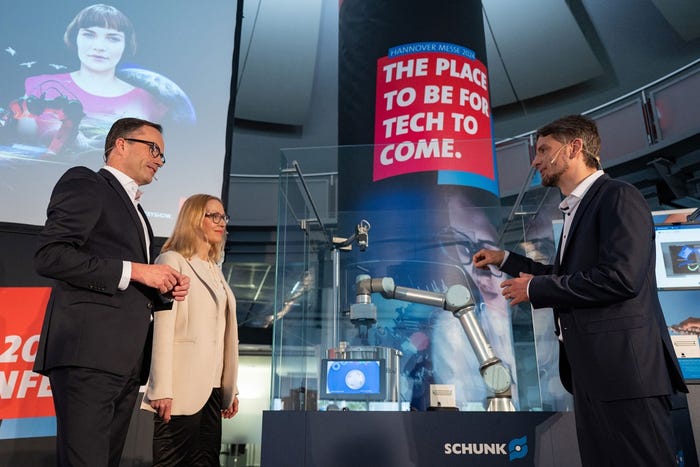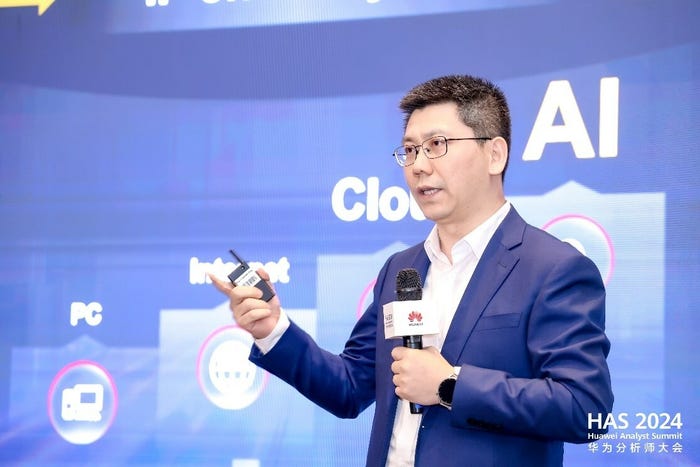Virtual reality (VR) and augmented reality (AR) are nascent technologies but they frequently play a central role in maturing IoT projects at businesses.
May 16, 2017

For companies with internet-of-things game plans, both VR and AR frequently feature as central components, targeting enterprises and industrial players just as much as everyday consumers.
When Mastercard steps up to speak at Internet of Things World this May, they'll be discussing how third parties can be employed most effectively to deliver on these strategies.
Mastercard's Internet of Things World speaker Stephane Wyper, senior vice president of new commerce partnerships and commercialization, leads a team tasked with commercializing the opportunities that IoT, VR and AR present. Scrutinize the 400+ speakers featured on the conference agenda all you like – you're unlikely to find a greater advocate for prioritizing VR and AR in the IoT space.
The rise of virtual reality banking
Due to the similar nature of the technologies, VR and AR tend to be lumped together as one category. “But to my mind, these are very distinct environments,” Wyper says.
He begins by describing how Mastercard sees virtual reality being used in the payments space:
“We look beyond the payment component, on to the broader commerce experience. The way that people will be paying is one element, but we also look at the steps that exist before and after the payments – things like loyalty, offers and fulfilment.”
Banks and retailers are especially keen to secure the new and retained business that could be unlocked by a VR-enabled user experience, affording customers all of the benefits of being in store (or branch) without having to leave their homes – and they see Mastercard as a prime candidate to fulfil this vision for them.
“We're interested in replicating a physical world experience entirely through a digital platform,” Wyper tells me. “The idea is, how do I take a brick-and-mortar store, then enable a consumer to be immersed in that environment through VR so they can access different products and services.”
Many businesses are infatuated with this idea because they see the mass-adoption of VR technology among consumers as an inevitability, sooner or later.
“The cost of the hardware is dropping, driven by the likes of Samsung, where the hardware is getting much cheaper from a price-point perspective. VR hardware will eventually become widely available to consumers,” Wyper agrees.
“Subsequently, when you look at the evolution in the processing power of those hardware devices, that will improve the actual experience a consumer would go through.”
The end result of these advancements will be “more fluid, interactive VR environments”, which is reassuring – it's difficult to imagine feeling comfortable using VR to transfer money and make payments as the technology currently stands.
Augmented reality to nudge customers in the right direction
According to Wyper, the key difference of augmented reality from Mastercard's perspective is that “AR allows consumers to have a different kind of experience when they're actually in a physical environment”.
So, he asks, how do you overlay a digital lens to that experience?
“Again, we're still at a relatively early stage from a consumer adoption perspective,” Wyper says. “That's despite the mass take-up we saw with Pokémon Go and other similar phenomena. In general, consumers are still testing and understanding what this experience can offer them.”
While VR can offer a perfected in-store experience from a remote location, AR stands to transform the customer's experience when actually in a store – and this technology's impact is much closer to being realized.
“Encouraging a consumer to move to certain parts of a store, where there are certain offers or products that the retailer wants to make them aware of”, is one game-changing application of AR that Mastercard is looking at, Wyper explains.
They're also interested in AR as means of gamification, where customers can unlock exclusive benefits or gain some sort of value from visiting certain brands, or stores in particular locations at certain times.
Unfortunately, there's no steadfast date yet on when these VR and AR technologies will see the light of day.
“One of the hardest challenges is trying to anticipate what's really going to take off, what will resonate, and the timing involved,” Wyper admits.
Never sacrifice security for innovation's sake
The ambitious plans that Wyper is proposing for these technologies that Wyper is proposing may make some security specialists quake in their boots, particularly where virtual reality is concerned. Virtual banking environments could mean many additional technological layers where security flaws might be overlooked and exposed, at a time when user vulnerability could have the direst consequences.
“We'll never sacrifice security for the sake of an innovation,” Wyper assures me. “What we've done as a company is ensure that, for all these evolutions to the commerce experience, we're also continuing to involve and enhance the security of every single transaction. These two things have to go hand in hand.”
Biometric identification and facial recognition are just two cybersecurity technologies that Mastercard is developing, where the widespread use of VR or AR would actually make their use even more applicable.
The Mastercard Digital Enablement Service (MDES) is another example. It's a solution that protects a cardholder's data when making digital payments, that's already used by the likes of Apple Pay and Samsung Pay.
A Mastercard partnering masterclass
Along with developing Mastercard's reach into IoT, VR and AR tech, Wyper is responsible for building the partnerships that will make this reach sustainable. This relates back to Wyper's previous role within Mastercard, where he spent three and a half years overseeing all of the company's startup activities, involving over 120 up-and-coming companies.
Partnerships with both startups (including work with Kasisto on AI-enabled chatbot platforms) and companies with a more established presence (see their work with IBM on connected car solutions) will be key as Mastercard furthers its work in VR and AR, which could be integral to the four main environments they're working on: home, work, retail and car.
“We look at each of those different components and discover the needs and pain-points for each,” Wyper explains. “Like what is it a car manufacturing might see that others don't which a connected device might solve, and how Mastercard can help to solve that issue.
“We can't do that just by ourselves, so partnerships are a core principle of how we go to market.”
More details on Mastercard's plans with IoT, VR and AR, along with which partnerships will be crucial to the fulfilment of these strategies, will be shared at Internet of Things World 2017 this May.
— Jeremy Coward, Community Manager, IoT World News
About the Author(s)
You May Also Like



.png?width=300&auto=webp&quality=80&disable=upscale)


.png?width=300&auto=webp&quality=80&disable=upscale)